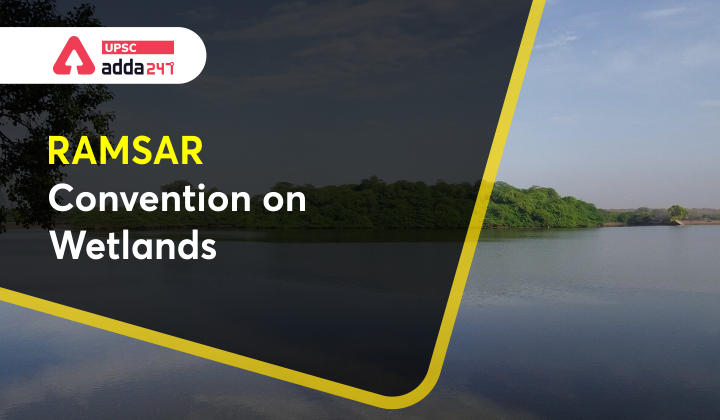Table of Contents
Ramsar Convention on Wetlands
Ramsar convention is one of the most important agreements that UPSC keeps asking in civil services examinations. It is important for the aspirants to know about the various aspects of the convention so that they can answer the questions that are based on this convention.
About Ramsar convention
- The Convention on Wetlands is the oldest of the modern global intergovernmental environmental agreements.
- The treaty was negotiated through the 1960s by countries and non – governmental organizations concerned about the increasing loss and degradation of wetland habitat for migratory waterbirds.
- It was adopted in the Iranian city of Ramsar in 1971 and came into force in 1975.
- Since then, the Convention on Wetlands has been known as the Ramsar Convention.
- The Contracting Parties approved the Fourth Strategic Plan for 2016-2024 at COP12.
Aim of Ramsar convention
- Ramsar Convention’s broad aims are to halt the worldwide loss of wetlands and to conserve, through wise use and management, those that remain.

What are Ramsar wetlands?
- The Ramsar Convention encourages the designation of sites containing representative, rare or unique wetlands, or wetlands that are important for conserving biological diversity.
- Once designated (i.e., after fulfilling the criteria for its inclusion), these sites are added to the Convention’s List of Wetlands of International Importance and become known as Ramsar sites.
- In designating a wetland as a Ramsar site, countries agree to establish and oversee a management framework aimed at conserving the wetland and ensuring its wise use.
- Wetlands can be included on the list of wetlands of international importance because of their ecological, botanical, zoological, limnological or hydrological importance.
Commitments of contracting parties
Contracting Parties make a commitment to:
- designate at least one site that meets the Ramsar criteria for inclusion in the List of Wetlands of International Importance
- promote the conservation and wise use of wetlands
- include wetland conservation within their national land-use planning
- establish nature reserves on wetlands and promote wetland training, and
- consult with other Contracting Parties about the implementation of the Ramsar Convention.
Importance of wetlands
- Wetlands are among the world’s most productive environments; cradles of biological diversity that provide the water and productivity upon which countless species of plants and animals depend for survival.
- Wetlands are indispensable for the countless benefits or “ecosystem services” that they provide humanity, ranging from freshwater supply, food and building materials, and biodiversity, to flood control, groundwater recharge, and climate change mitigation.
What is ‘wise use’ of wetlands?
- The Convention defines wise use of wetlands as “the maintenance of their ecological character, achieved through the implementation of ecosystem approaches, within the context of sustainable development”.
- Wise use can thus be seen as the conservation and sustainable use of wetlands and all the services they provide, for the benefit of people and nature.
Ramsar convention India
- The convention entered into force in India on 1 February 1982.
- India currently has 47 sites designated as Wetlands of International Importance (Ramsar Sites).
- Here are the list of Ramsar wetlands in India.
What are wetlands?
- According to WWF, a wetland is a place where the land is covered by water, either salt, fresh or somewhere in between.
- Marshes and ponds, the edge of a lake or ocean, the delta at the mouth of a river, low-lying areas that frequently flood—all of these are wetlands.
Types of wetlands
Under the Ramsar convention, wetlands have been classified into following three categories:
- Marine/Coastal Wetlands: includes permanent shallow marine waters; coral reefs; estuarine waters; intertidal marshes, coastal lagoons, among others.
- Inland wetlands: includes Permanent inland deltas; Permanent rivers/streams/creeks; alpine wetlands, tundra wetlands; waterfalls; geothermal wetlands, among others.
- Human-made wetlands: aquaculture ponds; irrigated land; water storage areas; wastewater treatment areas; Canals and drainage channels, ditches; among others.
Also Read:




 TSPSC Group 1 Question Paper 2024, Downl...
TSPSC Group 1 Question Paper 2024, Downl...
 TSPSC Group 1 Answer key 2024 Out, Downl...
TSPSC Group 1 Answer key 2024 Out, Downl...
 UPSC Prelims 2024 Question Paper, Downlo...
UPSC Prelims 2024 Question Paper, Downlo...
